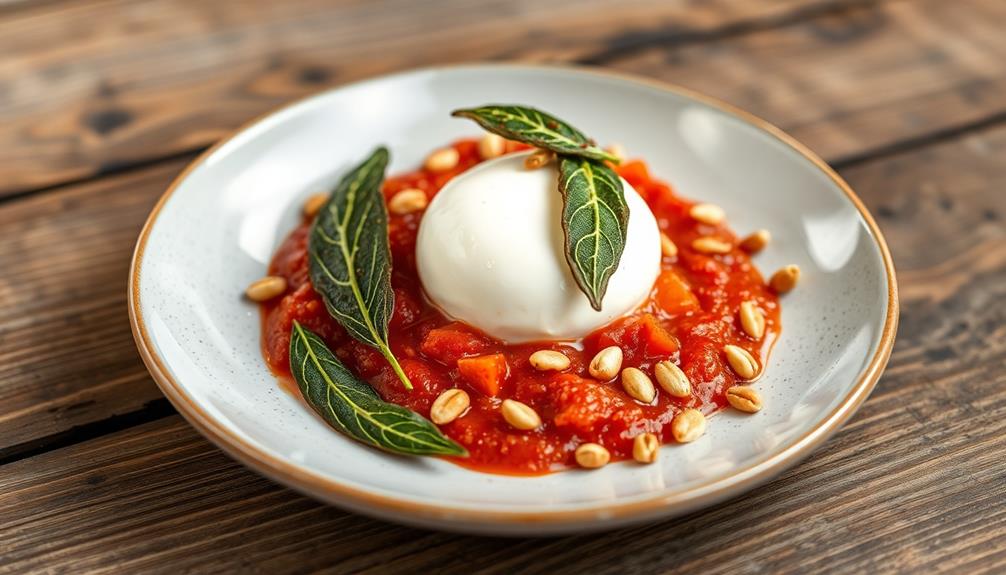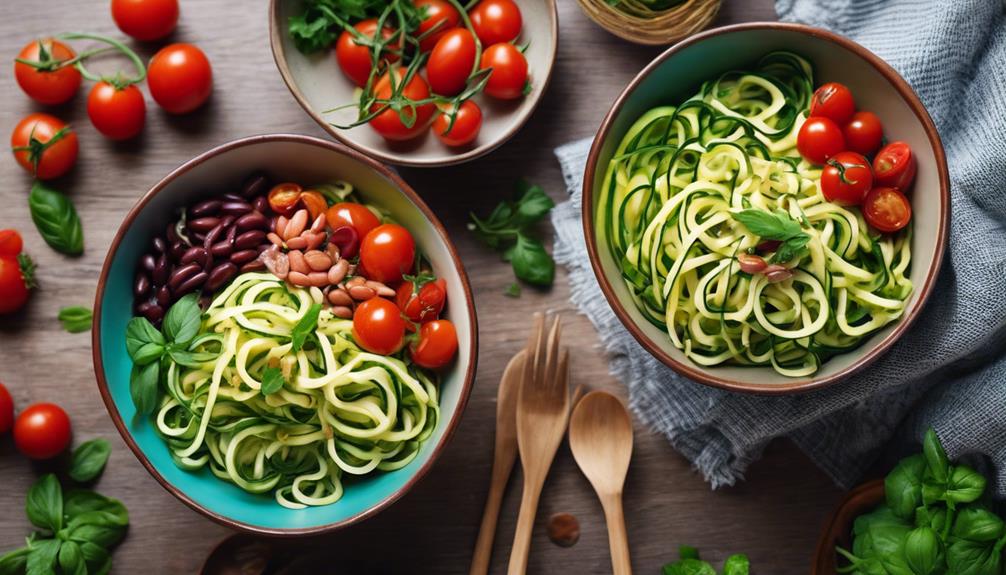Texture plays an essential role in your enjoyment of food, as it impacts both the eating experience and your emotional responses. When you bite into something crunchy, for example, it can enhance flavor perception and evoke feelings of joy. Your brain processes various textures alongside taste and aroma, creating a holistic experience. Different cultures have unique texture preferences that shape what you enjoy eating. Additionally, the right combination of textures can elevate a dish, making it more appealing. There's so much more to explore about how texture affects your food choices and enjoyment.
Key Takeaways
- Food texture significantly impacts overall satisfaction and enjoyment, influencing flavor perception and emotional responses during consumption.
- The interplay between texture, taste, and aroma creates a holistic eating experience, enhancing flavor perception and satisfaction.
- Cultural preferences shape texture choices, with different cuisines favoring specific textures that reflect culinary identity and tradition.
- Texture attributes like crunchiness and creaminess can improve perceived food quality and promote satiety, affecting consumer acceptance.
- Combining various textures in dishes enhances dining experiences, keeping palates engaged and elevating enjoyment of meals.
Importance of Food Texture
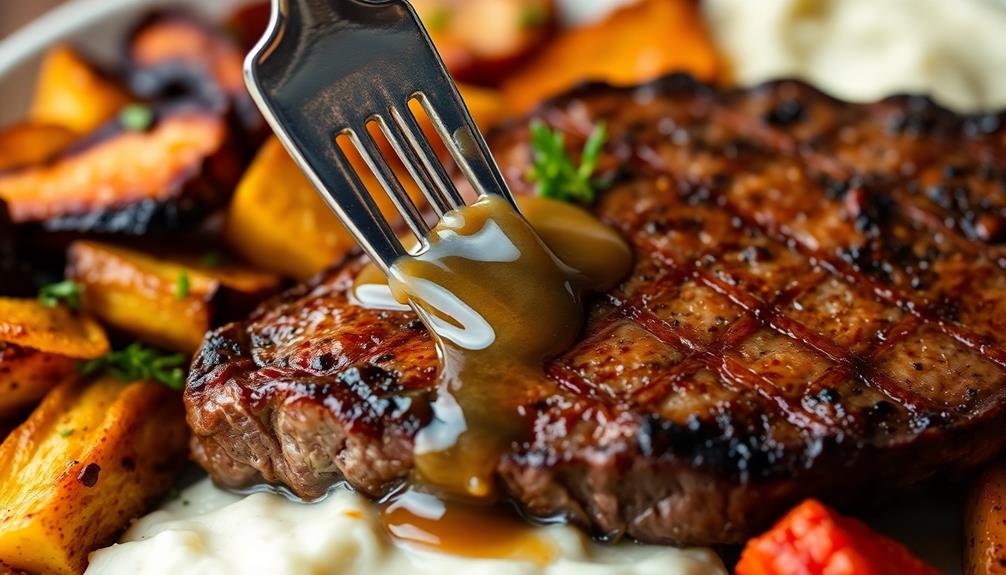
Food texture plays a vital role in your eating experience, influencing everything from your initial bite to your overall satisfaction. The physical sensations you encounter—like hardness, crispness, and chewiness—are important to your food enjoyment.
For instance, dishes like Red-Braised Pork Belly and Chicken Feet showcase how varying textures can elevate flavor experiences. In fact, mechanical texture properties often serve as key indicators of food freshness and quality, sometimes impacting your acceptance of an item more than its flavor. If a texture surprises you in an unpleasant way, you're likely to reject it.
Variations in texture can even alter how you perceive flavors, making certain foods taste saltier or sweeter. This complex interaction highlights just how integral texture is to your culinary experiences. Research shows that specific textures can evoke strong emotional responses, shaping your food choices and overall satisfaction during meals.
When you enjoy a dish with the right texture, it enhances your enjoyment and reinforces positive consumption behaviors. Given the significant role texture plays in the palatability of foods, it's important to take texture into account when developing new food products.
Ultimately, the right texture can elevate your dining experience, transforming a meal into a memorable culinary journey.
Mechanisms of Texture Perception
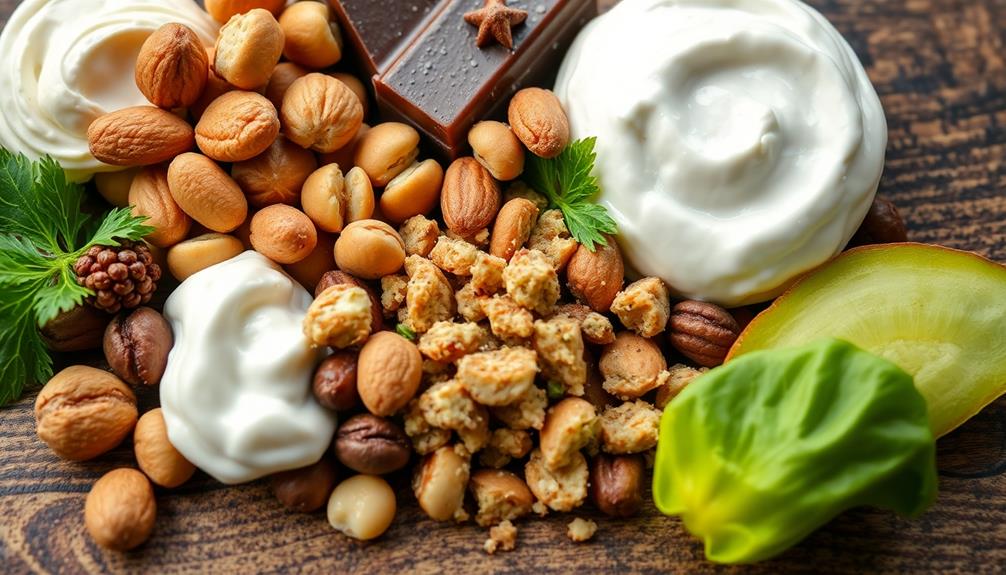
When you eat, your tongue, teeth, and palate work together to create a rich tapestry of texture perception that goes beyond just taste.
The varied textures found in Brazilian cuisine, from the creamy softness of Curau to the crunchy delight of Paoca, illustrate how texture can elevate the overall dining experience.
Your brain processes these texture signals in conjunction with taste and aroma, shaping how you experience food.
Different cultures also influence your texture preferences, highlighting the dynamic interplay of sensory interactions in food enjoyment.
Sensory Interaction Dynamics
Engaging in the act of eating, you experience a fascinating interplay of textures that shapes your perception of food. Texture perception isn't just about what you feel; it involves complex interactions between the mechanical properties of food—like hardness and crispness—and the sensory signals your tongue, cheeks, and palate send to your brain. This dynamic relationship enhances your taste experience, as certain textures can amplify flavors such as saltiness or sweetness.
| Texture Type | Sensory Experience |
|---|---|
| Crunchy | Enhances flavor perception |
| Creamy | Adds richness and smoothness |
| Chewy | Provides satisfaction |
The brain processes these textures through dedicated sensorimotor circuits, allowing you to discern various textures via active touch. Research shows that heightened texture sensitivity often correlates with consumer preferences, leading you to favor foods with distinct and pleasurable textures. Ultimately, the sensory interactions between texture, taste, and aroma create a holistic eating experience that contributes to the overall enjoyment and complexity of food.
Neural Processing Pathways
Texture perception relies on intricate neural processing pathways that allow you to discern a variety of tactile sensations. These pathways form a dedicated sensorimotor circuit, enabling you to actively touch and differentiate textures.
When you enjoy food, your brain processes texture information through complex interactions between sensory signals from touch, taste, and aroma, enhancing your overall eating experience. For instance, the varied textures of dishes like Dorayaki with its fluffy pancakes and smooth red bean paste can greatly influence your enjoyment of this traditional treat.
Here are some key points about how neural processing pathways influence your perception of texture:
- Texture sensitivity varies among individuals, affecting how you experience food.
- The brain's reward system gets activated by texture perception, increasing feelings of pleasure.
- Texture can alter flavor perception, making foods taste saltier or sweeter.
- Minute differences in texture, like ice crystals in ice cream, can be detected, showcasing the precision of your sensory system.
- These interactions between texture and taste highlight the essential role of neural processing pathways in food enjoyment.
Understanding these mechanisms not only enriches your appreciation of food but also underscores the importance of texture in your overall dining experience.
Cultural Texture Preferences
Cultural preferences for texture greatly influence how you experience food across different cuisines. In Western cultures, you might find a tendency towards smooth and tender textures, while Eastern cuisines often celebrate chewy and irregular textures.
For example, dishes like Mushroom Masala highlight the importance of texture, enhancing the earthy mushroom flavor through a rich blend of spices. This contrast reflects distinct culinary traditions and highlights how cultural attitudes towards texture shape your overall food enjoyment.
Your texture preferences are also molded by early experiences. If you were exposed to a variety of textures as a child, you're likely to embrace diverse foods later in life. Notably, the time of day can affect your texture choices too. You might lean towards familiar textures for breakfast, but feel adventurous with textures during lunch or dinner.
Research shows that texture markedly impacts flavor perception. For instance, creamy textures can enhance the richness of a dish, making the overall experience more enjoyable.
In Japan, the emphasis on texture in cuisine illustrates how deeply ingrained these preferences can be in culinary identity. Understanding these cultural nuances helps you appreciate the complexity of food enjoyment, revealing that texture isn't just a physical characteristic—it's a crucial part of your eating experience influenced by cultural context.
Impact on Consumer Preferences

When you choose a food item, texture plays an essential role in how fresh and appealing it seems to you.
For instance, the contrast between the crispy exterior and tender interior of a traditional Angolan chicken dish can heighten the overall eating experience.
Your cultural background also shapes your texture preferences, influencing what you enjoy or avoid.
Understanding these factors can help you make more informed choices about the foods you love.
Texture and Freshness Perception
Understanding how you perceive freshness can greatly influence your food choices, as the texture often acts as a key indicator of quality. For instance, traditional Ethiopian dishes like Yetimatim Fitfit showcase how the combination of torn injera and fresh tomatoes creates a delightful texture that enhances perceived freshness.
When you bite into something, the crispness or crunchiness can signal how fresh it is. Food manufacturers know that a mismatch between expected and actual texture can lead to rejection of their products. Fresh foods are typically linked with desirable textures, affecting how much you like or accept a product.
Consider these factors when evaluating texture and freshness:
- Crispness: A crunchy bite often indicates freshness.
- Smoothness: Creamy textures can enhance perception of quality.
- Firmness: A firm bite can suggest ripeness and readiness.
- Chewiness: This can evoke a sense of satisfaction.
- Mouthfeel: The overall sensation in your mouth adds to the freshness experience.
Your emotional response to texture further influences your enjoyment of food. Positive textures not only evoke feelings of freshness but also enhance your overall eating experience.
Cultural Texture Preferences
Texture plays a pivotal role in shaping your food preferences, deeply influenced by the cultural context in which you've grown up. Your cultural attitudes toward texture greatly impact what you enjoy eating. For instance, Western cuisines often favor smooth and tender textures, while Eastern cuisines embrace chewy and irregular textures, reflecting diverse culinary traditions.
| Cultural Group | Texture Preferences | Examples of Foods |
|---|---|---|
| Western | Smooth, tender | Mashed potatoes, yogurt |
| Eastern | Chewy, irregular | Sushi, dumplings |
| Mediterranean | Crunchy, firm | Pita bread, olives |
| Latin American | Soft, hearty | Arepas, tamales |
Parental influence shapes your texture preferences from a young age, as exposure to different textures can impact your lifelong choices. Additionally, time of day affects these preferences; you might prefer soft and creamy textures for breakfast, while later meals invite more adventurous textures. Finally, dietary acculturation can broaden your palate, allowing you to appreciate diverse textures and flavors in your meals.
Emotional Responses to Texture
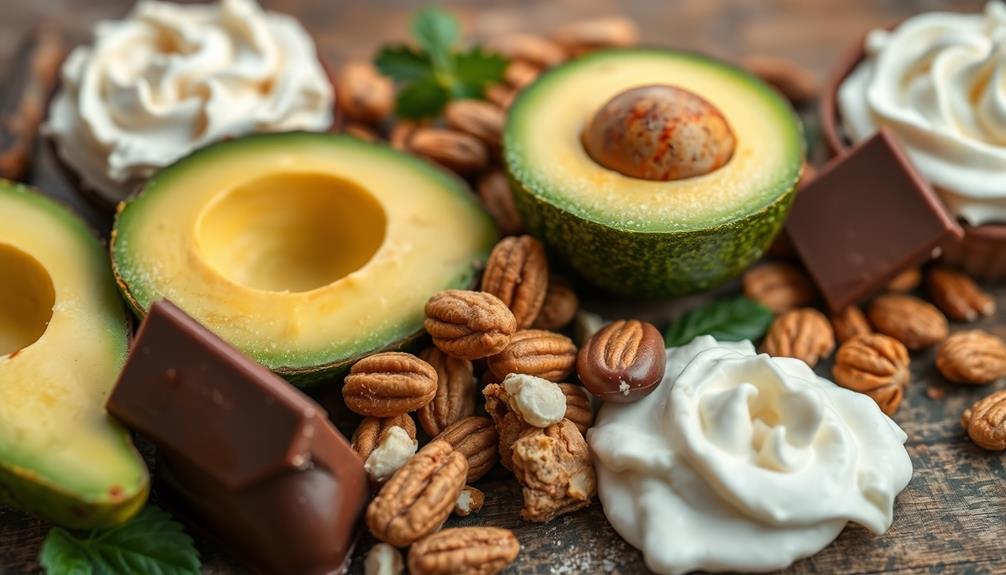
Experiencing different textures in food can trigger powerful emotional responses that shape your enjoyment. The texture properties of food play a significant role in how you perceive and enjoy your meals. For instance, creamy, smooth textures can evoke feelings of comfort, while crispy or crunchy textures may add excitement to your dining experience. Interestingly, foods considered aphrodisiacs, such as oysters or chocolate, not only stimulate the senses with their flavors but also with their unique textures, enhancing the overall sensory experience. This multisensory interaction creates a deeper connection to the food, influencing both your mood and satisfaction.
For instance, familiar textures often evoke feelings of comfort and nostalgia, enhancing overall food enjoyment. Dishes like squash casserole can remind you of family gatherings, while the crispy crunch of fried pork chops can create a sense of joy and satisfaction. Your sensitivity to texture can be influenced by your cultural background and personal experiences, leading to unique preferences.
Consider these emotional responses related to texture:
- Comfort: Creamy textures often remind you of childhood favorites.
- Joy: Crunchy foods can create excitement, making each bite more engaging.
- Disgust: Unpleasant textures, like sliminess, can trigger strong negative reactions.
- Satisfaction: Enjoyable textures encourage you to savor and consume more.
- Nostalgia: Certain textures can transport you back to memorable meals or gatherings.
Your emotional responses to texture can profoundly affect your dietary choices. When you enjoy the mouthfeel of food, it leads to greater satisfaction and may prompt you to seek out those specific textures more often.
Understanding how texture influences your emotions can enhance your overall food enjoyment experience.
Texture and Flavor Interactions
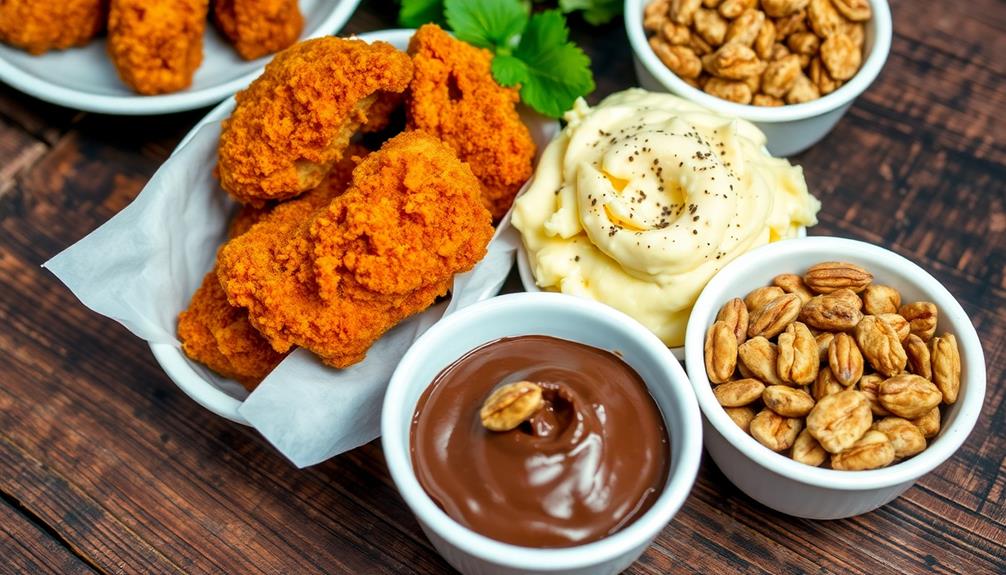
While you might think of flavor as the star of the culinary show, texture plays a significant supporting role that can elevate your dining experience. The interplay between taste and texture is essential; certain food textures can actually enhance the taste perception of saltiness or sweetness.
For instance, think about how the Graveyard Taco Dip combines creamy guacamole and sour cream with crunchy tortilla chips to create a delightful contrast. When chefs create dishes, they often combine creamy elements with crunchy ones, crafting complex culinary experiences that tantalize your palate.
Subtle variations in food texture can make low-viscosity foods more enjoyable. Imagine a smooth yogurt topped with crunchy granola—it's this contrast that heightens your overall satisfaction.
Additionally, adjusting texture can alter your perception of fat content, allowing you to enjoy healthier options without sacrificing that indulgent feeling.
This holistic approach to food underscores how texture adds depth and excitement to flavor perception. So, when you're savoring a meal, pay attention to how different textures interact with the flavors on your plate.
You might discover that the way something feels in your mouth can transform the entire taste experience, leading to a more satisfying and enjoyable meal.
Research Insights on Texture

The role of texture in food enjoyment extends beyond mere sensory pleasure; it considerably shapes your preferences and choices. Research shows that texture plays a crucial role in how you evaluate food, often outweighing flavor in your decision-making process. Food scientists have uncovered fascinating insights into how mechanical properties influence your perception of freshness and quality.
For example, the contrast between creamy fillings and spongy cakes, like in a pumpkin roll, can markedly enhance your overall dining experience.
Here are some key findings about texture:
- Crunchiness and creaminess can enhance your perception of food quality.
- The "crunch effect" may aid in weight loss by promoting satiety.
- Your brain processes texture in conjunction with taste and aroma, impacting your overall enjoyment.
- Consumer acceptance hinges on texture attributes, affecting your willingness to try new foods.
- Discrepancies between expected and actual textures can lead to rejection of products.
These insights highlight how essential texture is to your eating experience. When food scientists examine these factors, they not only enhance food products but also help you make more informed choices.
Practical Applications in Cuisine
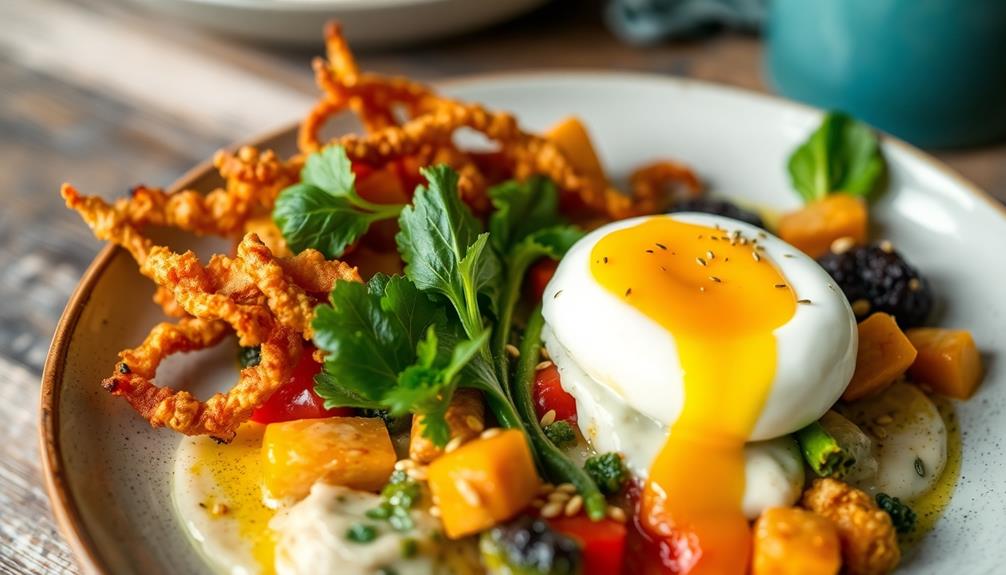
Combining different textures in your meals can elevate your dining experience considerably. Chefs often enhance their dishes by pairing creamy sauces with crunchy toppings, creating a dynamic interplay that keeps your palate engaged.
For instance, traditional Indonesian desserts like Kue Putu offer a delightful contrast between the soft steamed rice cake and the rich grated coconut topping, making each bite a textural delight. This "crunch effect" not only adds excitement but can also promote satiety, encouraging you to enjoy your food at a more leisurely pace.
Food companies are increasingly recognizing the importance of texture in product development. By analyzing texture attributes like hardness and crispness, they guarantee consistent quality and sensory appeal in their offerings.
For instance, incorporating texture modifiers can enhance the flavor perception in low-fat or low-sugar foods, making them more enjoyable without compromising health.
Cultural preferences also play a significant role in how textures are embraced. In cuisines like Japanese, a high value is placed on textural variety, driving culinary innovation across the globe.
Frequently Asked Questions
How Does Texture Influence Our Enjoyment of Food?
Texture influences your enjoyment of food by affecting how you perceive flavors, enhance satisfaction, and create variety. Crunchy or creamy bites can elevate a meal, making it more memorable and appealing to your taste buds.
How Food Texture Plays Vital Role in Consumer Satisfaction?
Did you know that 80% of consumers base their satisfaction on texture? When you savor your meal, that crunchiness or creaminess can elevate your experience, making it an essential factor in whether you enjoy your food.
How Important Is Texture to Taste?
Texture's essential to taste because it affects your perception of flavors. You might find certain textures amplify sweetness or saltiness, making your overall eating experience richer and more enjoyable. It's all about that delightful combination!
Why Do People Care About Food Texture?
People prioritize pleasing food textures because they heighten hunger satisfaction. Crunchy, creamy, or chewy sensations create memorable meals. You'll find that texture not only enhances enjoyment but also influences your overall perception of quality and freshness.
Conclusion
So, you might think you enjoy food just for its taste, but let's be honest—texture plays a sneaky yet essential role in your dining experience. That crunchy bite or creamy mouthfeel can make or break your meal, even if you pretend it doesn't matter. Embracing the complexity of textures not only elevates your palate but also transforms your emotional connection to food. Next time you savor a dish, remember: it's not just what's on your plate, but how it feels too.
